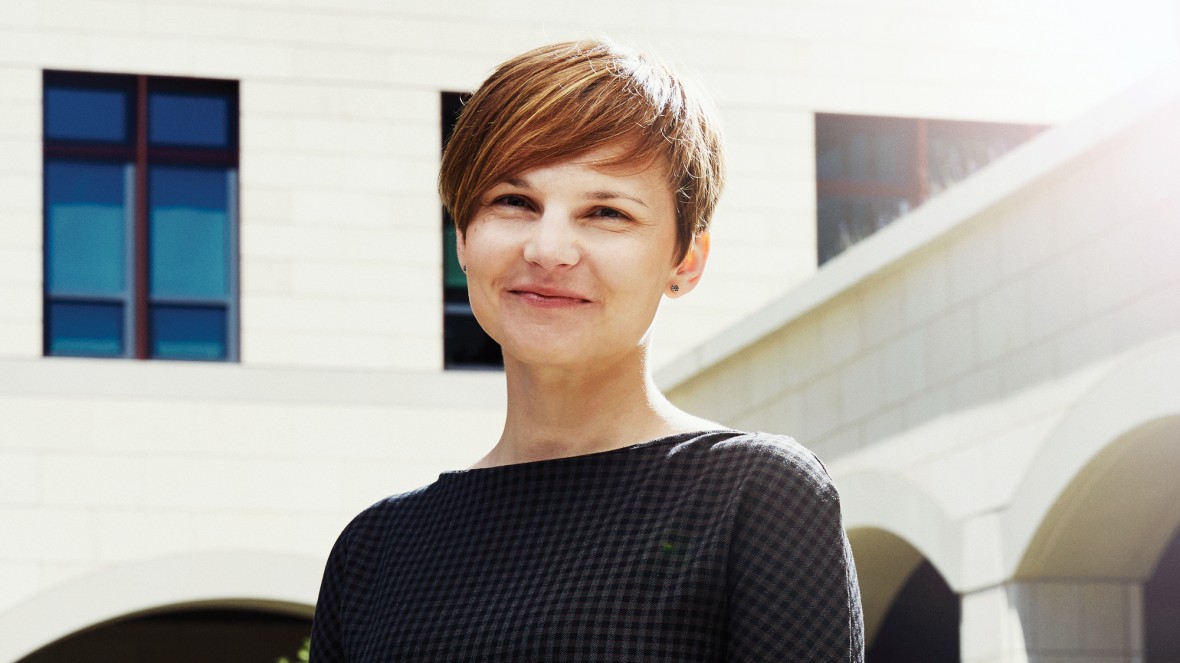
` Aleksandra Vojvodic, 34
University of Pennsylvania
A computation whiz speeds up the search for catalysts that will make green chemistry possible.
Using enzymes honed over hundreds of millions of years of evolution, plants readily split water into oxygen and hydrogen that’s used to fuel metabolic reactions. Humans, too, could use hydrogen as a fuel and a way to store energy from intermittent renewable sources. But we don’t have millions of years to figure out how to make practical catalysts.
Aleksandra Vojvodic uses supercomputers to design new catalysts for water splitting and other reactions. The idea behind her work, she explains, is to “circumvent the trial and error of nature”—and of the chemistry lab.
Splitting water requires two catalysts, one for making hydrogen and the other for making oxygen. “The things that work efficiently are usually rare or expensive,” says Vojvodic. That’s where computational chemistry comes in. To predict the behavior of a catalyst, Vojvodic makes computer models that relate a material’s functions to its structure using the rules of quantum mechanics. Chemists know what functions the catalyst needs to have, and they know how different kinds of atoms and structures are likely to behave. Vojvodic’s computer experiments, at the SLAC National Accelerator Lab, have yielded oxygen--producing catalysts that match or outperform those made of expensive materials.
Researchers have been using powerful computers to try to design better catalysts for years, with varying degrees of success. But today’s supercomputers are now capable of doing much more complex calculations. And Vojvodic has been exceptionally talented at taking advantage of computing power; identifying new ways to represent electronic properties, chemical structure, nanostructure, and other properties in mathematical calculations; and writing programs to carry them out. Working with experimentalists, she and her coworkers have recently made extremely efficient water-splitting catalysts that her modeling work predicted. The researchers are now eyeing other catalysts, including ones that can convert nitrogen and other abundant molecules into useful chemicals.
—Katherine Bourzac
